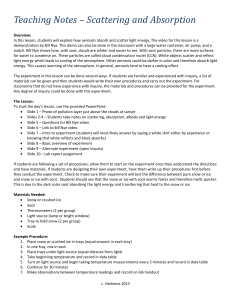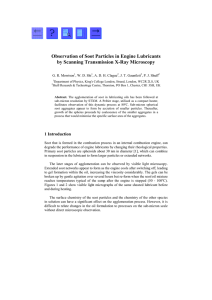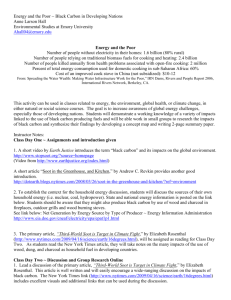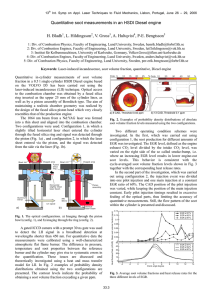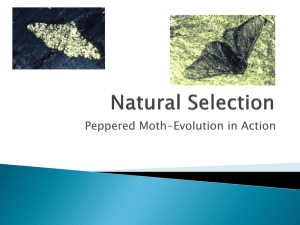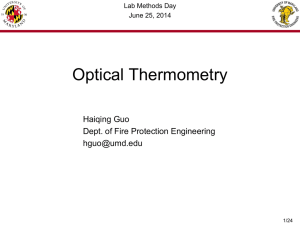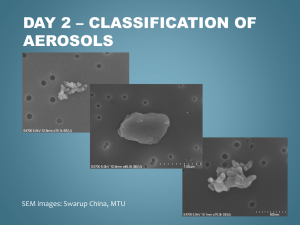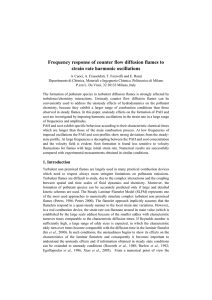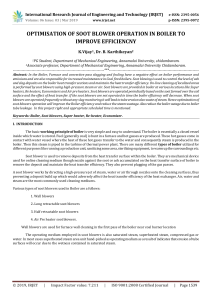Paper 10.6 Two-dimensional Imaging of Sizes and Number Densities of Nanoscaled Particles
advertisement
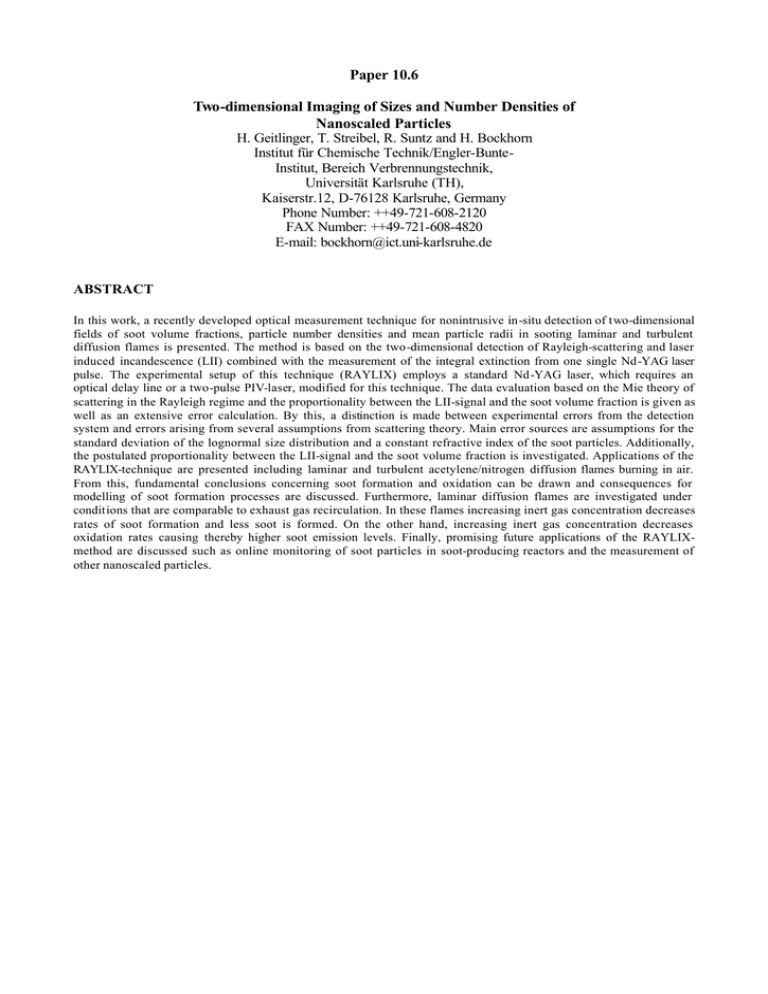
Paper 10.6 Two-dimensional Imaging of Sizes and Number Densities of Nanoscaled Particles H. Geitlinger, T. Streibel, R. Suntz and H. Bockhorn Institut für Chemische Technik/Engler-BunteInstitut, Bereich Verbrennungstechnik, Universität Karlsruhe (TH), Kaiserstr.12, D-76128 Karlsruhe, Germany Phone Number: ++49-721-608-2120 FAX Number: ++49-721-608-4820 E-mail: bockhorn@ict.uni-karlsruhe.de ABSTRACT In this work, a recently developed optical measurement technique for nonintrusive in-situ detection of two-dimensional fields of soot volume fractions, particle number densities and mean particle radii in sooting laminar and turbulent diffusion flames is presented. The method is based on the two-dimensional detection of Rayleigh-scattering and laser induced incandescence (LII) combined with the measurement of the integral extinction from one single Nd-YAG laser pulse. The experimental setup of this technique (RAYLIX) employs a standard Nd-YAG laser, which requires an optical delay line or a two-pulse PIV-laser, modified for this technique. The data evaluation based on the Mie theory of scattering in the Rayleigh regime and the proportionality between the LII-signal and the soot volume fraction is given as well as an extensive error calculation. By this, a distinction is made between experimental errors from the detection system and errors arising from several assumptions from scattering theory. Main error sources are assumptions for the standard deviation of the lognormal size distribution and a constant refractive index of the soot particles. Additionally, the postulated proportionality between the LII-signal and the soot volume fraction is investigated. Applications of the RAYLIX-technique are presented including laminar and turbulent acetylene/nitrogen diffusion flames burning in air. From this, fundamental conclusions concerning soot formation and oxidation can be drawn and consequences for modelling of soot formation processes are discussed. Furthermore, laminar diffusion flames are investigated under conditions that are comparable to exhaust gas recirculation. In these flames increasing inert gas concentration decreases rates of soot formation and less soot is formed. On the other hand, increasing inert gas concentration decreases oxidation rates causing thereby higher soot emission levels. Finally, promising future applications of the RAYLIXmethod are discussed such as online monitoring of soot particles in soot-producing reactors and the measurement of other nanoscaled particles.
